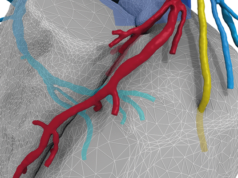
In the first head-to-head randomised controlled trial of third generation durable-polymer drug-eluting stents for the treatment of coronary artery disease in an all-comers patient population, the Resolute Integrity drug-eluting stent (Medtronic) and the Promus Element drug-eluting stent (Boston Scientific) performed similarly on all measures except longitudinal strength, which favoured the Resolute device.
In the first head-to-head randomised controlled trial of third generation durable-polymer drug-eluting stents for the treatment of coronary artery disease in an all-comers patient population, the Resolute Integrity drug-eluting stent (Medtronic) and the Promus Element drug-eluting stent (Boston Scientific) performed similarly on all measures except longitudinal strength, which favoured the Resolute device.
One-year results from DUTCH PEERS, which included a pre-specified assessment of this device characteristic, were presented at the Transcatheter Cardiovascular Therapeutics (TCT) scientific symposium (27 October–1 November, San Francisco, USA) during the late-breaking clinical trials session and simultaneously published in The Lancet.
The results show a statistically significant difference in longitudinal stent deformation (length-wise distortion or shortening of the device inside the artery after deployment) between the two devices at one year of follow-up (p=0.002): nine occurrences (1.0%) with the platinum-chromium Promus Element stent platform (n=905) vs. zero occurrences (0.0%) with the cobalt-alloy Resolute Integrity stent platform (n=905).
“A potential trade-off with the novel, flexible designs of third-generation stent platforms was thought to be reduced longitudinal device stability,” says lead author and presenter Clemens von Birgelen, co-director of the Department of Cardiology at Thoraxcentrum Twente and professor of cardiology at the University of Twente, The Netherlands. “However, our study did not find such a trade-off with the Resolute”.
In contrast to the finding on longitudinal strength, DUTCH PEERS found no statistically significant differences at one year between the Resolute Integrity and Promus Element stents on the composite primary endpoint of target vessel failure (6.1% vs. 5.2%, p=0.42). Individual components of target vessel failure—cardiac death, target vessel myocardial infarction, and target vessel revascularisation—were also low and similar in both groups. Additionally, the incidence of definite/probable stent thrombosis for both groups was similarly low (0.6% vs. 0.9% respectively, p=0.40), and there was no definite stent thrombosis in either group after three months following stent implantation.
DUTCH PEERS, also known as TWENTE II, adds to the growing body of evidence from all-comers stent studies it states in a press release, which include very few exclusion criteria to ensure applicability of their results to real-world clinical practice. Previously, at TCT11, von Birgelen unveiled the results of the original TWENTE trial, another head-to-head all-comers study, which found excellent clinical results with the second-generation Resolute and no significant differences compared to Xience V drug-eluting stent (Abbott) at one year. “The strong clinical performance of the Resolute Integrity in DUTCH PEERS is very consistent with the results of the Resolute that were found in TWENTE,” he says.













